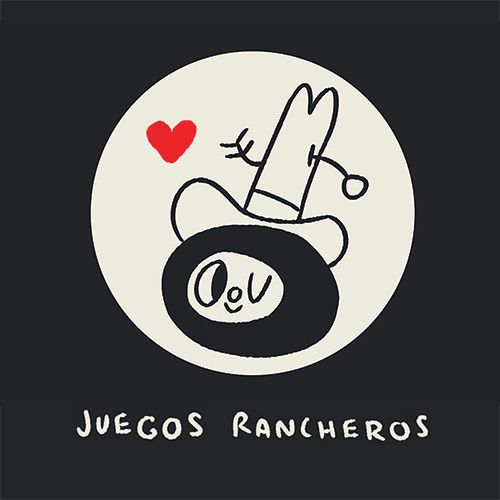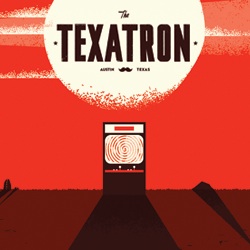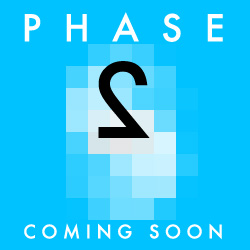BLUEBERRY GARDEN, MACHINARIUM, BETWEEN TOP 2009 IGF AWARDS
Always one of the top highlights of GDC, the 2009 Independent Games Festival Awards saw Erik Svedang’s pen-and-ink platformer Blueberry Garden come home with the top Seumas McNally Grand Prize — along with the $30,000 in prize money — now joining the ranks of games like Crayon Physics Deluxe, Aquaria and Darwinia.
Elsewhere in the evening’s proceedings (which contained a bit less of the antics of previous years), the Innovation Award (henceforth to be reclassified the ‘Nuovo’ Award for works that bring something genuinely new to gaming) was won by Jason Rohrer’s Between, and Machinarium brought home the Excellence in Visual Art award (accepted by Amanita Design’s Jakub Dvorský, above).
Digital Eel’s essentially terrifying BrainPipe took the Excellence in Audio award, Cortex Command (Data Realms’ long time IGF entrant) took home both the Technical Excellence and Audience Awards, KranX’s Musaic Box won for Excellence in Design, Best Student Game went to the DigiPen team behind Tag: The Power of Paint, and Hemisphere’s Osmos won the D2D Vision Award.
For more on all the winners of this year’s awards, check the comprehensive Offworld Guide to the IGF.
Previously:
The Offworld Guide to the 2009 Independent Games Festival – Offworld
Pixeljunk Eden, Osmos top 2009 IGF nominations – Offworld
The Young Machinarium: Another early look at Amanita's latest …
Passage's Jason Rohrer and emotional game experiences – Offworld
See more posts about: Offworld Originals
POSTCARD FROM GDC: SLOUCHING THROUGH WEDNESDAY
Apologies for not having updated with more regularity throughout the first part of the week: as usual, GDC this year — particularly Monday and Tuesday’s Indie Games Summit — has been an unceasing torrent of back to back sessions punctuated only by chance hallway encounters in between of people you haven’t seen in years, people you’ve never seen in person, and people who you’ve always wanted to see, and I’m sitting on a mountain of backlogged notes I’ll work my way through over the coming days.
In a way, I wish the IGS was why we were all here, and that it could go the whole week through: especially this year there’s a palpable energy and even more a sense of purpose and community to the indie game devs. As more people leave their salaried positions to set up shop for themselves, there’s a definite (and in some cases, outright spoken) sense that This Is What We Should Be Doing, and There’s Room For All Of Us, and Let’s Not Let Anyone Else Get Left Behind.
All of this togetherness culminated with last night’s Flashbang/2D Boy/Grubby Games 10-Bit party at The Cellar (with Pixeljam co-founder Miles Tilmann and Shaw-Han Liem of I Am Robot And Proud providing the OST), followed by an impromptu and very, very, very inadvisable (but absolutely brilliant) afterparty that’s left me running on little more than the fumes of yesterday’s fumes today.
I wouldn’t have traded it for anything, though: I’ve seen things I’ve long been waiting to see and heard the first whispers of other amazing new things, all of which I’m busting to splash all over these pages when I can. Even if 2008 was The Year Indie Broke, there still stands a very good chance it’s going to break all over again in 2009.
Previously:
Indie Games Summit: Ron Carmel explains 2D Boy by the numbers …
Indie Games Summit: 2D Boy/Polytron's top 10 ways to market your …
See more posts about: Offworld Originals
INDIE GAMES SUMMIT: POLYTRON DEBUT NEW FEZ TRAILER
If you weren’t in Kyle Gabler and Phil Fish’s early morning indie games promotion session, a special treat for you: Polytron’s second Fez trailer showing off its newly updated mechanics and art.
The limited palette CGA-esque cave is fantastic.
FEZ TRAILER 2 [Polytron]
Previously:
Polytron affirm essential awesomeness – Offworld
Poly-amory: Polytron's Polyshop v0.1 offers Fez, Portable Pro …
Happiness is a warm Fez: prepare for wonderful – Offworld
Happy pills: Fez, Aquaria devs collaborating on new iPhone game …
Polytron affirm essential awesomeness – Offworld
Only on Offworld: Polytron/Kokoromi's Anaglyphic super HYPERCUBE …
See more posts about: Offworld Originals, Polytron
GDC09 TAKEN ON A BIT.TRIP
A low-bit rainbow-pixellated bird has alerted me that the above envelopes may be making several hidden appearances stashed furtively around the Moscone Center Wednesday through Friday during GDC, and that retrieving one of the envelopes could net you a free download of Gaijin Games’ just-released WiiWare game Bit.Trip: Beat. I have no reason to doubt the bird on his word.
Win a free copy of BIT.TRIP BEAT! [Gaijin]
Previously:
Gaijin Games taking the Wii on a Bit.Trip – Offworld
Beat: My god, it's full of bits – Offworld
Beat connection: Gaijin send us on a second video Bit.Trip – Offworld
Bit.Trip: Beat prepped for March 16th WiiWare launch – Offworld
See more posts about: Bit.Trip, Gaijin, Offworld Originals
INDIE GAMES SUMMIT: 2D BOY/POLYTRON’S TOP 10 WAYS TO MARKET YOUR INDIE GAME
As two of indie gaming’s best known figures (least of all for their consecutive Indie Games Fest wins), 2D Boy‘s Kyle Gabler and Polytron head/Fez creator Phil Fish kicked off the second day of the Independent Games Summit with a tag-team session on how other aspiring devs can smartly promote both themselves and their games.
Quick facts from Gabler: Valve’s Left 4 Dead marketing budget was $10 million, Spore‘s $35 million (compared to its $50 million development budget) and Wii Fit‘s was $40 million, a figure Gabler reckoned could buy 21,917 indie devs a burrito every day for a year.
What to do with World of Goo‘s marketing budget of zero, then? Three quick tips from Gabler’s “self promotion jelly bag”: absolutely run a blog, enter the IGF, Penny Arcade, and as many other indie competitions as you can, and rather than paying a marketing firm to measure how well word is spreading around the net on your game, set up a Google Alert.
#10: Do PR, not marketing
“Get yourself out there as much as your game,” the duo said. “Marketing is mostly bullshit: lies, statues as EB Games of your game characters.” Don’t spend money buying banners or google ads, talk to people: talk to blogs, do interviews/podcasts, all things that are free and get you insane exposure, they advised.
#9: Learn how the press works
Where the traditional media operates on a cycle of company announcements, first game announcements, first screenshots, etc., there are a number of sites (say, for example, Offworld.com) that actually care about and want to be interested in your game, and word from those blogs trickles up to more mainstream outlets, though, paradoxically, it’s the biggest outlets (the CNNs and the like) that drive the least amount of traffic your way.
#8: Make a good trailer
This is a good trailer. It’s 2009 and we have no idea if the game exists, and it doesn’t even really matter.
#7: Journalists are humans, too
Be friends with them, because friends help friends. Fish gave 1UP a thumbstick with exclusive direct footage of Fez‘s debut, which fostered a beneficial mutual relationship: “throw them a bone: they want to help you, and they understand you have no money.”
#6: Your game actually matters
Speaking from their experience with large companies, marketing people traditionally look down at developers because they make licensed products and are therefore irrelevant because the games could sell on their license alone.
For example, Ubisoft employed friends of Fish’s working on Splinter Cell 4 were especially proud of a level where Sam Fisher was jailed and had to escape with no gadgets or weapons. One of the marketing team took a screenshot from the level and photoshopped in a knife in his hand, which was released to the press. When the horrified team complained that there were no weapons in the level, the marketer said, “well, there is now.”
For better or worse, as an indie, you can’t rely on any of that, your game “has to be easy to describe and easy to love,” like Jon Mak’s Everyday Shooter and its instantly recognizable hook as “an album of shooters.”
On the other hand, “don’t be a dick,” said Fish. “It’s nice to find a way to be engaging, but show respect, don’t treat everybody like you’re letting them in on your secret. Be nice.”
#5: It goes both ways
When Gabler noted that everybody in the press were using the same nearly identical screenshot from the early demo of World of Goo, he realized it was because none of the other levels had that same visual appeal and included more character-based elements elsewhere in the game — subsequently, the coverage diversified and showed off more of the game than just one of its earliest levels.
#4: Participate in the community
This one’s simple: go to GDC, Global Game Jam, IGDA, Pecha Kucha, Barcamp, speak everywhere.
#3: A PR crisis is good for business
When the PC port of Xbox Live Arcade hit Braid was announced for PC at a price $5 higher than its XBLA counterpart, the internet “set on fire” because of that price discrepancy and kicked off a wave of promotion about the game. When creator Jon Blow made the decision five days later to lower the price, it kicked off a second wave.
Gabler saw similar results with an early round of European press when it was announced that World of Goo would be released as a retail game in the region rather than a WiiWare downloadable, and got the same second round of “redemption” press when they reversed the decision.
#2: Manage your hype
Essentially, said Fish, “don’t show stuff too early.”
With Spore, he said, everybody remembers the amazing 2005 demo, the game looked finished and everyone wanted it then, but in the intervening three years until its actual release, the hype surrounding the game took on impossible to meet expectations.
The same went for Fez, which saw a small backlash after he showed off its newly updated artwork following its IGF debut.
And finally:
#1: Wear silly hats
“Be lovable as an indie,” said Fish. The IGF site still uses a photo of him in his trademark fez, Crayon Physics creator Petri Purho went to magician school, Flashbang’s Steve and Matt are the mommy and daddy of the indie scene, etc.
The human interest story is important to the press, and indie developers, especially small/one-person teams, are in the unique position of strongly playing that angle.
See more posts about: Offworld Originals, Polytron
INDIE GAMES SUMMIT: RON CARMEL EXPLAINS 2D BOY BY THE NUMBERS
2D Boy‘s Ron Carmel opened up this year’s Independent Games Summit hoping to somewhat demystify the process of starting your own indie studio (which he summarized with the following three steps: “save money, quit your job, and make a game”), and in doing so divulged their own by-the-numbers breakdown of how their goo-built world was formed.
How much money do you need to start a studio? For 2D Boy, it was $4000 on hardware (including dev kits for the Wii), $1000 on software, and $5000 for a part time QA person. On top of that, though there was another $10,000 in unexpected costs: legal fees, after running into trouble with one of their publishers, and localization costs.
But on top of that, living expenses were about $2000 a month for both Kyle Gabler and Carmel, and their estimated 8 months of development time was a “very wrong” estimate: that ended up being 24 months, for a total of $96,000.
On the upside, they took in $60,000 in pre-orders, so they both contributed $28,000 out of pocket. What to do if you don’t have that? Move in with your parents, and make a smaller game.
Carmel also broke down sales on 2D Boy’s various distribution channels (their own site, Steam, WiiWare, retail and other distribution channels) and found that the vast majority in 2008 came from WiiWare (though at a lower price), then their own site, then Steam, then retail, then various other portals. In 2009, Steam took a much larger slice, but the important stat here was that retail was only responsible for 2-3% of revenues, andn they spent far more time negotiating those deals. Platforms, coincidentally, were broken down as 65 percent Windows, 25 percent Mac, and 10 percent Linux.
Most interestingly, Carmel then moved on to their thoughts on working with publishers versus sticking with direct sales through download sites, and said that choosing a good publishing deal was like picking a good wine: it’s whatever tastes good to you.
When they first started out, they had an offer for a $180k advance and a 10% royalty, but the tone from the publisher (who said their game wasn’t original and was too niche) left a sour taste, so they moved on to another offer of $225k up front and a 20% royalty. They felt a bit iffy about that, and were actually offered a better deal than that just for Europe, but by the time the publisher countered with a $425k advance and 20-24% royalty they’d got an even better offer.
That publisher was willing to put up a $700,000 advance and a 30-35% royalty, which was obviously more compelling, but in looking over the contract, they found the publisher also wanted right of first refusal for sequels and maintained the rights to port the game to other platforms (DS, XBLA), and wanted to keep 65-70% of the net profits for shipping and marketing costs.
Instead, they went to one final publisher and said they didn’t want to give up their IP rights and wanted $700,000 up front, and asked what kind of royalty they could get given those terms, and were offered 15 percent.
In the end, they looked at how much they could possibly sell on Steam/WiiWare and direct via their site and whether that could beat those rates, and concluded that they’d drop everything and go entirely with digital distribution. His all-caps conclusion to other indies looking to work with a publisher: DON’T DO IT.
Other helpful hints for digital distributing indies: “do it yourself, approach all the channels yourself, there’s nothing nothing magical about it,” and “focus on the big boys: steam/PSN/WiiWare/XBLA, and don’t worry about anybody else.”
Finally, he said, don’t bother with DRM. It’s a waste of time, only makes the DRM provider money, any game gets cracked anyway, and the cracked version has a better user experience — 2D Boy saw no change in piracy rate between World of Goo and other DRM’d games.
So what’s next for 2D Boy, one questioner asked? A game, Carmel said, called Sophomore Effect, which they intend to make intentionally mediocre.
World of Goo home [2D Boy]
Previously:
Listen: 2D Boy's free World of Goo soundtrack – Offworld
2D Boy's World of Goo: The community updates – Offworld
Scream real loud: the playable origins of World of Goo – Offworld
Tarballs: World of Goo released for Linux – Offworld
See more posts about: Offworld Originals
DESIGN REBOOT HD: BRAID DEV’S “GAMES AS CHEAP DRUGS” LECTURE, ANIMATED
Braid creator Jonathan Blow’s session at the 2007 Montreal International Games Festival (one given before his game had been released, and one I covered for Gamasutra) was somewhat of a minor landmark for the industry — a lecture specifically designed to incite both developers and the public at large to think differently about the subtle messages games were sending to the average consumer, and an invitation to give people more ‘nutrition’ than the ‘cheap drugs’ they were more often being fed.
Amongst many other things, as you’ll hear above, Blow singled out games like World of Warcraft, arguing that exceptional action is meaningless in it and games of its ilk — that the true lesson it was teaching is that “running the same treadmill” as the everyone else would net you success and reward enough.
To spread awareness about the lecture (the full audio of which Blow posted to his site soon afterward), Toronto designer Craig ‘superbrothers‘ Adams (recently covered for his work on art/games blog the 1console) has posted DESIGN REBOOT HD, an animation inspired by the talk, created “just in time for GDC.”
More than a simple tribute, though, Adams hopes bringing the lecture back to light will inspire further discussion: he’s posted his own lengthy summary of and reaction to the talk, and called on a few select people to comment publicly (myself included, which I intend to do shortly after the frenetic whirlwind of GDC itself, when I’ve had time to re-parse and re-think the myriad issues Blow raised) — the results of which will continue and evolve via the DESIGN REBOOT site.
DESIGN REBOOT HD [Superbrothers, music for the video by the formerly-Momus-hyped duo Super Madrigal Bros.]
Previously:
The 1console future: Toronto designer Superbrothers goes games …
Xbox Live Arcade hit puzzler Braid coming to PC in March – Offworld
See more posts about: Offworld Originals, Superbrothers
INVASION OF MILAN: SPACE INVADER ART EXHIBIT OPENS IN ITALY
If the thought of having to track down his work from street corner to street corner fatigues you: Milan’s The Don Gallery is currently exhibiting the work of three French street/guerrilla artists, most notably Offworld favorite Space Invader.
From the opening night snapshots by French blog Guillotine, he’s showing off both his more traditional pixel/invader mosaics and his more recently devised ‘Rubikism’ series, pixel portraits by reshuffled and re-stuck sides of Rubik’s Cubes.
The exhibition runs through the 20th of April, just enough time for a post-GDC jetset jaunt to Italy.
ALËXONE, SPACE INVADER & WK INTERACT – ALI FRANCE EXHIBITION – MILAN – OPENING [Guillotine]
Previously:
Invasion in progress: video of Space Invader's 763rd Paris …
'Art of the Game' exhibit announced for Italy's Museum of Valle d …
Offworld: Art Archives
See more posts about: Art, Offworld Originals
ATTACK ON B612: NGMOCO’S STAR DEFENSE IN MOTION
After a few scarce quick teased photos earlier this month, ngmoco have uploaded the first video of their 3D spherical tower defense game Star Defense, and it wasn’t until just this moment that I realized how much the tower defense genre rests on your ability to size up the entire play-field at once, and how much more hectic having most of it obscured will be. Luckily, the multi-touch/zoom mechanics in place look like they’ll fit the bill quite nicely.
Star Defense in action! [ngmoco]
Previously:
Ngmoco tease spherical 3D tower defense iPhone game Star Defense …
See more posts about: Offworld Originals
GIMME INDIE DISCOUNT: STEAM’S INDIE GAME WEEKEND SALE
My travels to San Francisco for GDC have delayed me from mentioning this, but for the rest of the weekend, Valve’s Steam service has put all its indie selection on discount, from Darwinia to Gish to World of Goo.
Also of note, Tale of Tales’ art/horror game The Path, above, has just been released on the service and comes recommended. Though I haven’t yet had the chance to play through the full version (and, frustratingly, won’t be able to until I’m back home in a week), but the short time I spent with its protagonist Ruby in last year’s GDC demo has had it high on my anticipated list since.
If you’ve played through their IGF nominated game The Graveyard, you’ll know generally what to expect: a similarly unconventional experience that, in contrast to the end-of-life reflection in that game, retells the Little Red Riding Hood story and approaches horror from a coming-of-age perspective of six young girls — the big bad wolf here represented by predatory men.
Steam: INDIE GAMES SALE [Valve, full Steam indie lineup]
Previously:
Offworld: The Offworld Guide to IGF 2009 (pg. 2)
At the core of the World of Goo – Offworld
The art of vector-war – Offworld
The dynamic fluids of Chronic Logic's Gish – Offworld
Offworld: Indie Archives
See more posts about: Offworld Originals






